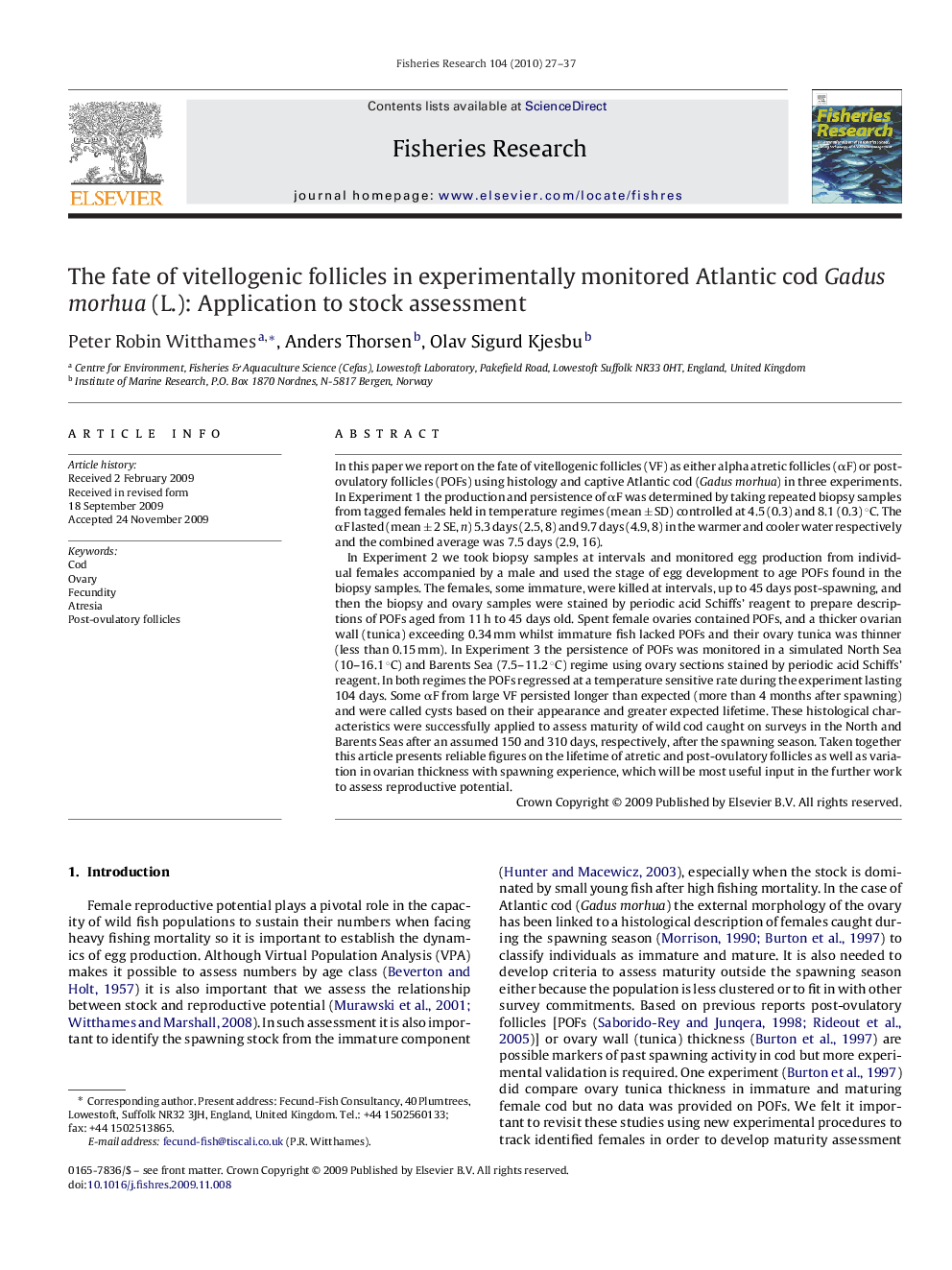| کد مقاله | کد نشریه | سال انتشار | مقاله انگلیسی | نسخه تمام متن |
|---|---|---|---|---|
| 4543864 | 1626849 | 2010 | 11 صفحه PDF | دانلود رایگان |

In this paper we report on the fate of vitellogenic follicles (VF) as either alpha atretic follicles (αF) or post-ovulatory follicles (POFs) using histology and captive Atlantic cod (Gadus morhua) in three experiments. In Experiment 1 the production and persistence of αF was determined by taking repeated biopsy samples from tagged females held in temperature regimes (mean ± SD) controlled at 4.5 (0.3) and 8.1 (0.3) °C. The αF lasted (mean ± 2 SE, n) 5.3 days (2.5, 8) and 9.7 days (4.9, 8) in the warmer and cooler water respectively and the combined average was 7.5 days (2.9, 16).In Experiment 2 we took biopsy samples at intervals and monitored egg production from individual females accompanied by a male and used the stage of egg development to age POFs found in the biopsy samples. The females, some immature, were killed at intervals, up to 45 days post-spawning, and then the biopsy and ovary samples were stained by periodic acid Schiffs’ reagent to prepare descriptions of POFs aged from 11 h to 45 days old. Spent female ovaries contained POFs, and a thicker ovarian wall (tunica) exceeding 0.34 mm whilst immature fish lacked POFs and their ovary tunica was thinner (less than 0.15 mm). In Experiment 3 the persistence of POFs was monitored in a simulated North Sea (10–16.1 °C) and Barents Sea (7.5–11.2 °C) regime using ovary sections stained by periodic acid Schiffs’ reagent. In both regimes the POFs regressed at a temperature sensitive rate during the experiment lasting 104 days. Some αF from large VF persisted longer than expected (more than 4 months after spawning) and were called cysts based on their appearance and greater expected lifetime. These histological characteristics were successfully applied to assess maturity of wild cod caught on surveys in the North and Barents Seas after an assumed 150 and 310 days, respectively, after the spawning season. Taken together this article presents reliable figures on the lifetime of atretic and post-ovulatory follicles as well as variation in ovarian thickness with spawning experience, which will be most useful input in the further work to assess reproductive potential.
Journal: Fisheries Research - Volume 104, Issues 1–3, May 2010, Pages 27–37